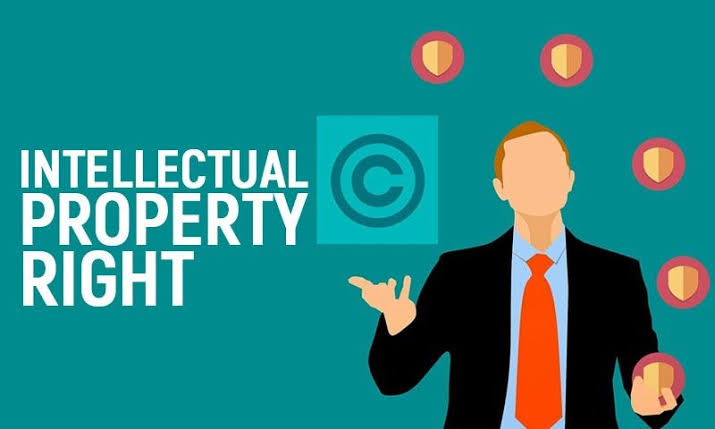INTELLECTUAL PROPERTY RIGHTS IN INDIA
Intellectual property rights, or IPRs, are the rights that people have over the works of their creative thinking, including inventions, literary and creative works of art, and names, symbols, and pictures used for commercial purposes. Typically, they grant the inventor a time-limited, exclusive right to utilize his or her creation. Article 27 of the Universal Declaration of Human Rights (UDHR) outlines these rights by stating that “Everyone has the right to the protection of the moral and material interests resulting from any scientific, literary or artistic production of which he is the author.” Therefore, the objective of IPR is to honor human intelligence by giving creators exclusive rights to their discoveries, creative works, musical compositions, etc.
The reasons behind granting protection to intellectual property through the enactment of suitable Intellectual Property (IP) laws are that it encourages inventions and creations that advance the social, economic, scientific, and cultural development of society. Moreover, by rewarding creators and enabling them to profit financially from their work, IP laws encourage innovation and creativity. Also, it gives authors’ efforts official legal acknowledgment and aids in preventing unauthorized use of their works that would violate their property rights.
Components of Intellectual Property Rights:
- Copyright: The rights of the writers and creators of literary and artistic works are covered by the term “copyright.” Authors are granted exclusive rights to their creations by copyright, which also forbids unauthorized publication and copying of their work. A piece of original creation is protected by copyright. Copyright does not apply to concepts that are only expressed in tangible ways; they do not have any legal protection.
The Copyright Act, 1957 is an extensive legislation concerning copyrights in India. The act controls the many facets of India’s copyright regime, including copyright registration, copyright transfer and license, copyright infringement, and corresponding remedies, etc.

- Patents: A patent is an exclusive right granted for an invention or innovation, which could be a product, a method, or a process that presents an innovative approach to a problem or provides new scientific solutions. Innovations with commercial and industrial value are eligible for patent protection. A patent owner may choose to sell their patent or allow others to use it under license. The Patent Act, 1970 provides for an exhaustive process for obtaining a patent, right from the filing of an application to the grant of a patent. The Act grants 20 years of patent protection, after which the technology or innovation enters the public domain.
- Trademarks: According to Section 2(zb) of the Trademarks Act, 1999, a “trademark” is any mark that may be represented graphically and is used to identify one person’s goods or services from those of another. A trademark can be one letter, a logo, a symbol, a design, or a set of numbers, as well as three-dimensional elements like form and packaging. Service Marks are trademarks that are associated with services like travel, banking, etc. The Trademarks Act of 1999 was passed to better protect trademarks for goods and services, facilitate their registration, and stop the use of fraudulent marks.
- Industrial Designs: The artistic elements of a product are referred to as its industrial design. It could be made up of two-dimensional elements like lines, patterns, or color, or three-dimensional elements like an object’s shape. To prevent others from imitating an industrial design, its creative originality ought to be given legal protection.
- Geographical Indications: Goods with a specified geographical origin are identified by a geographical indicator (GI). These indicators indicate the goods’ reputation, quality, or other attributes that are primarily related to their place of origin. Foodstuffs, agricultural items, wine, industrial products, and handicrafts are typically classified with geographical indicators.
- Trade Secrets: Trade secrets are intellectual property rights to exclusive information that can be licensed or sold. Any confidential business knowledge, such as designs, drawings, plans, business strategies, R&D-related data, etc., is referred to as a trade secret. Information must meet certain requirements to be considered a trade secret: it must have commercial value, meaning it must be helpful in a trade or business, and be known to a limited number of persons.
Sources:
- https://docs.manupatra.in/newsline/articles/Upload/41C26FED-7AFE-40EA-8736-4E6C516917AE.pdf
- https://assets.publishing.service.gov.uk/government/uploads/system/uploads/attachment_data/file/1080487/IP-Rights-in-India.pdf
- https://loksabhadocs.nic.in/Refinput/New_Reference_Notes/English/Intellectual%20Property%20Rights%20in%20India.pdf
- https://www.icsi.edu/media/webmodules/FINAL_IPR&LP_BOOK_10022020.pdf
Author: Saumya Gupta, a 2nd year law student at Symbiosis Law School, Hyderabad

